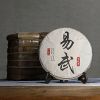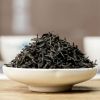-
Fast ShippingFree shipping for orders above $40
to most countries. -
Secure PaymentPay with Paypal, Credit Card …
-
Carefully SelectedFrequently Visit Tea Gardens.
Taste Repetitiously -
15 Days RefundNo Questions Asked
Refund Policy
Menghai Ripened Pu-erh Cake Tea – Year of Dragon
Aged, multiple aroma, mellow and sweet
Aged, multiple aroma, mellow and sweet
| Origin: |
Bulang Mountain, Menghai County, Xishuangbanna, Yunnan Province, China |
|---|---|
|
Harvest Date: |
March 22, 2012 |
|
Production Date: |
Jan. 1, 2024 |
| Weight |
357g |
| Dry Leaf: |
Evenly and tightly compressed round cake shape, the leaves are clear, dark brown in color with a few golden tips |
| Aroma: |
Chen Xiang, woody, mushroom and glutinous aroma |
| Liquor: |
Clear deep red |
| Taste: |
Smooth and delicate, sweet and full of flavor |
| Tea Bush: |
Menghai large-leaf tea bush species (200-300 years) |
| Tea Garden: |
Man Xin Long Tea Garden (1600m – 1900m) |
| Caffeine: |
Low caffeine (less than 10% of a cup of coffee) |
| Storage: |
Store in cool, dry place away from sunlight; keep ventilated |
| Shelf Life: |
The aged the better |
Angel's Comment:
The key fragrance note: woody aroma; the compound note is aged chen xiang, sweet and smooth in taste.
The raw material of this tea was picked in the spring of 2012, fermented into ripe tea in September of the same year, and made into this dragon zodiac commemorative tea cake in 2024. Coincidentally, 2012 was also the "Year of the Loong" in China, which can be said to be very meaningful. After aged for over ten years, this tea is very simple to adapt to. Chen Xiang, earthy, mushroom aroma as well as the glutinous fragrance intertwined, provides a full, delicate, soft and sweet taste. Whether you are a novice who wants to try ripe puerh, or an enthusiast, it is worthwhile to give it a shot.
 |
Cup Method |
 |
Chinese Gongfu Method |
 |
Teacup: 12oz / 355ml |  |
Gaiwan: 3.8oz / 110ml |
 |
212℉ / 100℃ |  |
212℉ / 100℃ |
 |
5g Tea |  |
10g Tea |
 |
Brewing time: 5 - 8 mins |  |
12 steeps: rinse 2 times, 10s, 10s, 10s, 10s, 10s, 20s, 30s, 50s, 60s, 80s, 100s, 150s |
| Rinse time is 5 seconds |
Man Xin Long stockaded village is located in Bulang Shan entirely surrounded by forests and at an elevation of 1800 meters. The Bulang nationality here migrated over two hundred years ago, and planted the original tea trees along the nearby 150 mu of hillsides during that time.
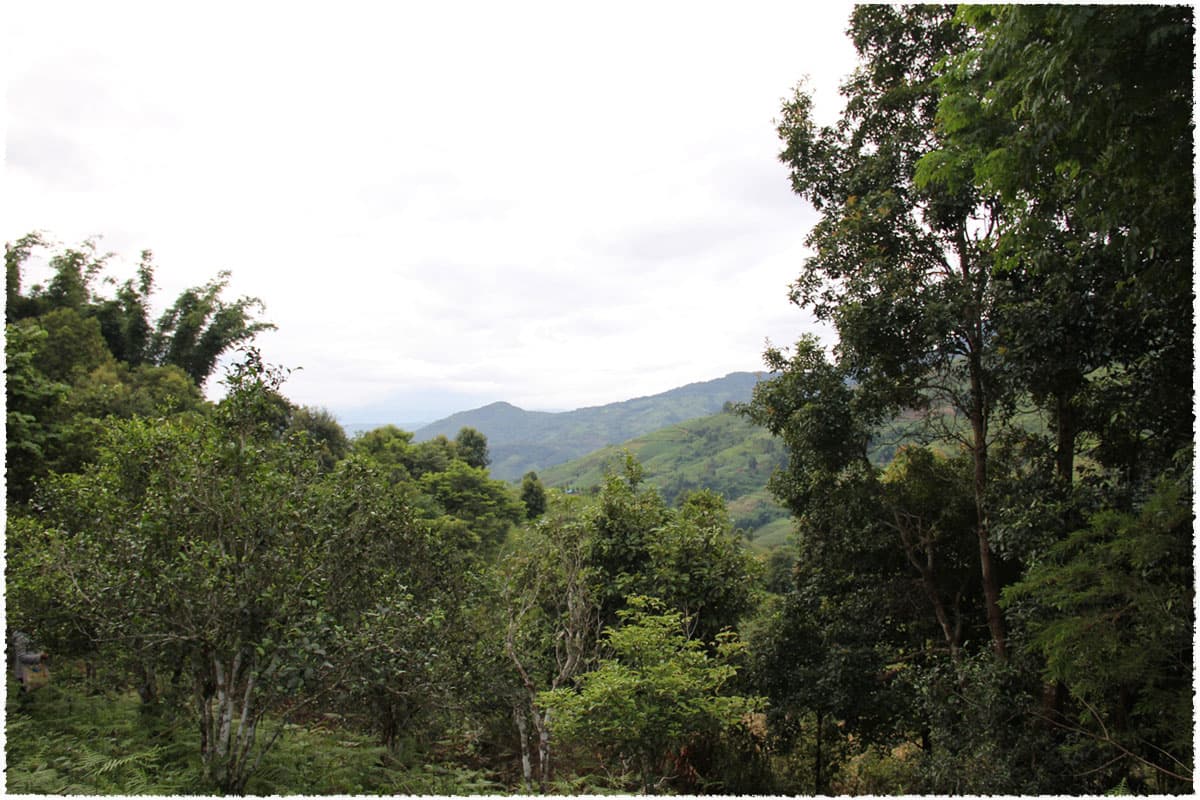
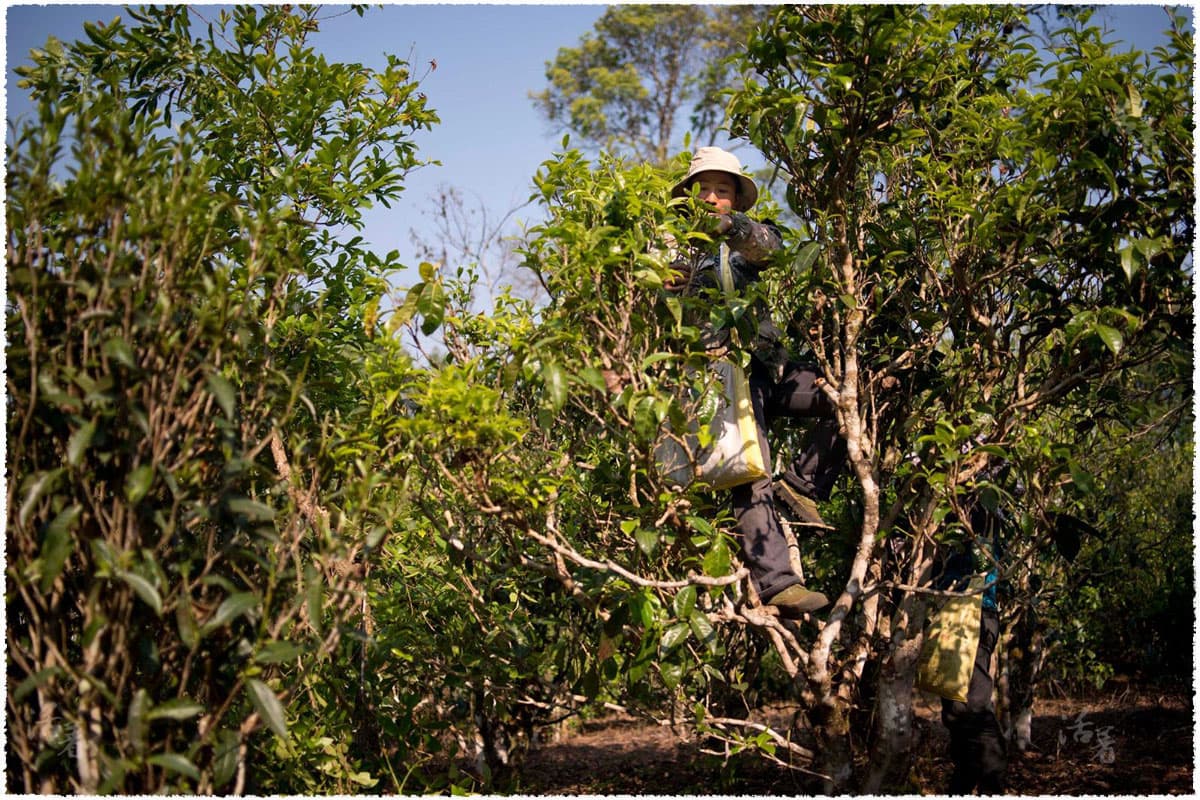
In the tea grove, tea farmers are picking tea leaves on the high tea tree.
Bulang Mountain sits in Menghai County of Xishuangbanna, Yunnan, and is a famous area of pu-erh production. This mountain houses the largest concentration of ancient tea trees within a 100,000-hectare area.
The mountain rolls and stretches across Menghai, with deep valleys cutting through hills that can reach up to 1216 meters on average, with the highest point, Sanduo Peak, rising almost 2100m above sea level. Bulang Mountain experiences a subtropical monsoon climate, with abundant sunlight and rainfall of about 1374mm per year, and the average temperature between 18 and 21℃. There is little risk of frost here, and the season for it is also short; during the spring and winter a heavy fog blankets the mountain, while the summer and autumn months are often overcast and rainy.
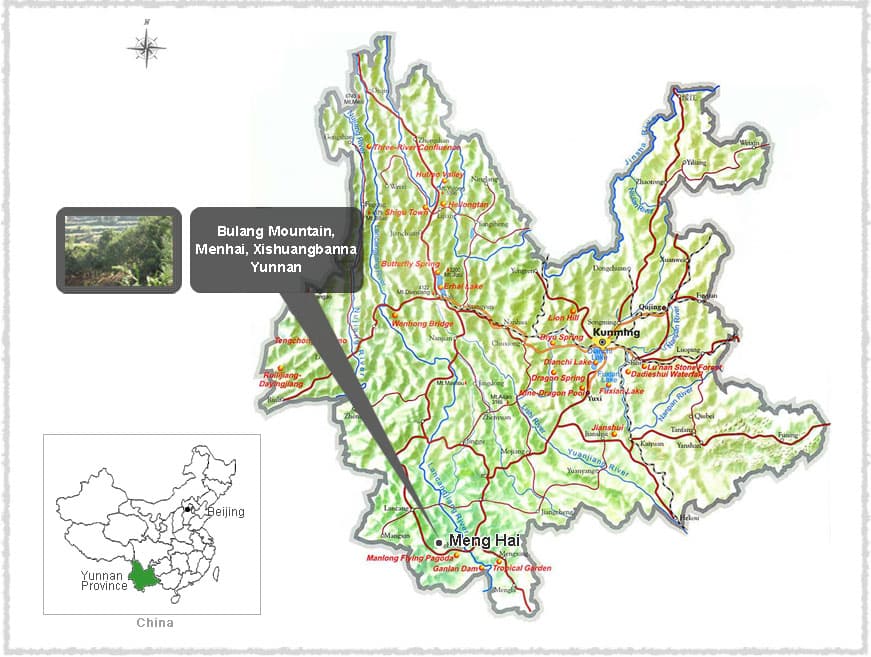
Native to Menghai County in Xishuangbanna, the Menghai large-leaf tea species was rated as the most improved national variety in 1984. It grows up to 7m tall in the wild with bold green leaves noticeably larger than more common varieties, and the buds of this species are yellowish-green and coated in fuzz. The leaves are high in phytochemicals, with one bud and two leaves containing 2.3% amino acids, 32.8% polyphenolic compounds, 4.1% caffeine, and 18.2% catechinic acid. Because of this, pu-erh tea made from this species is high in quality, rich yet soft in taste, and maintains a full-bodied essence.
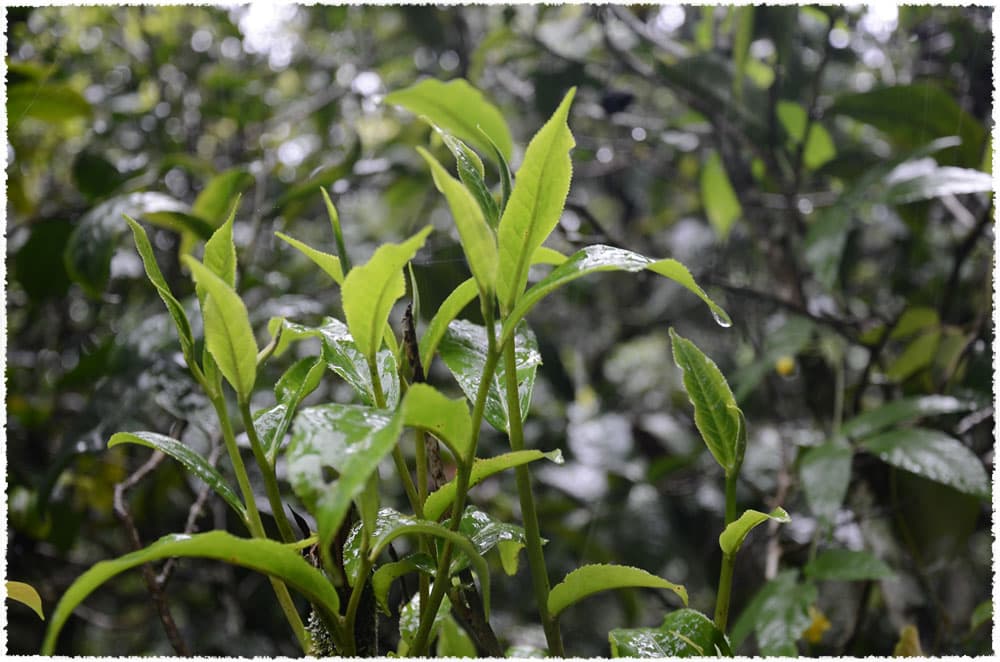
Pu-erh is one of the oldest types of tea in China with a history stretching back over 1700 years to the Eastern Han Dynasty, when the tea was called Jing Cha. It is named after the town of Pu’er in Yunnan province, which was originally the early trading center for this tea. In early history pu-erh was used as a bartering currency in southwest China, with the famed Cha Ma Gu Dao, the Tea Horse Road, being built for the purpose of transporting this tea through the Himalayas to other countries and areas in Tibet.



